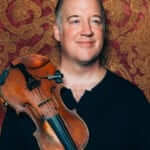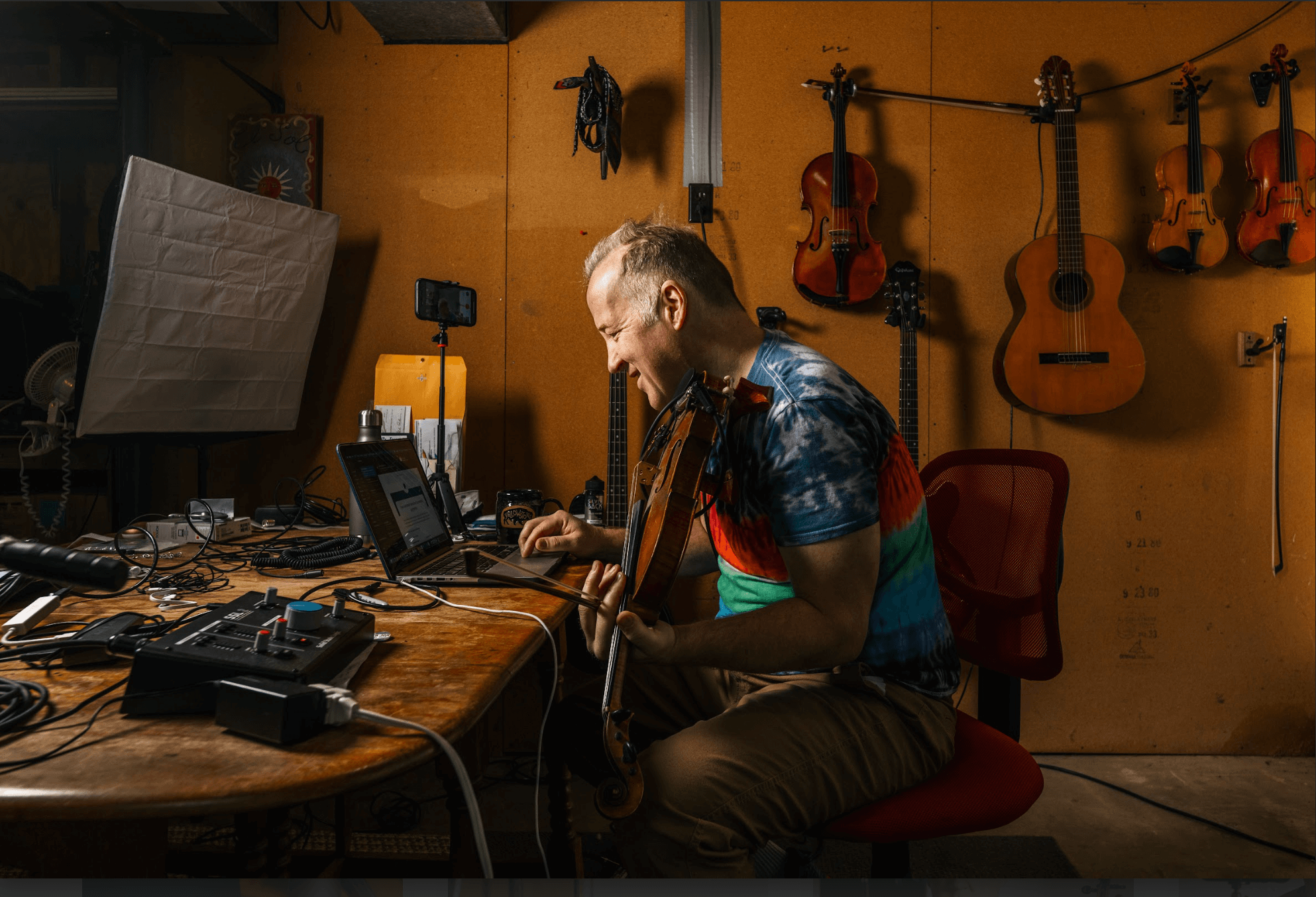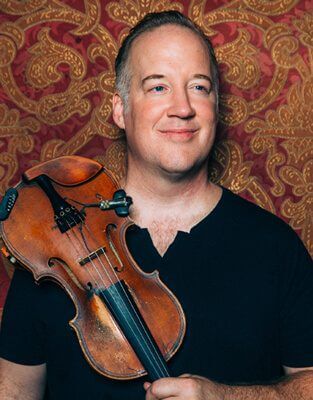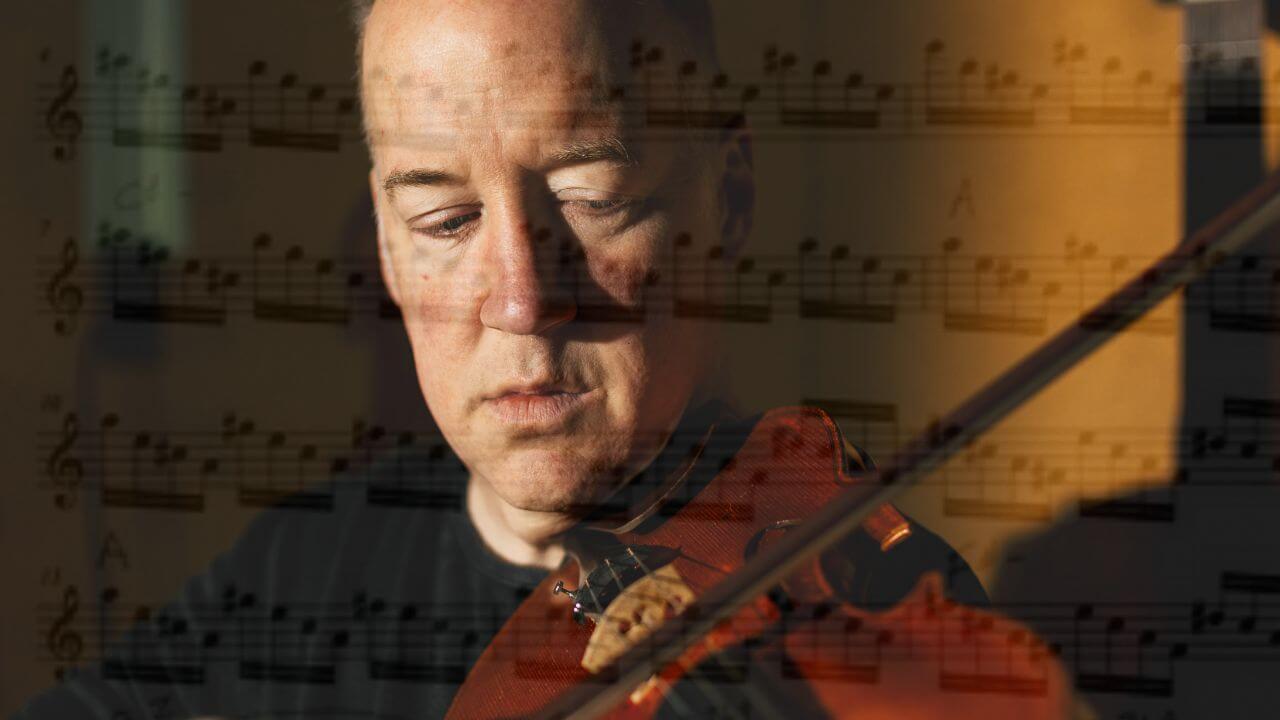Welcome to another “human” play along lesson on my website, where I aim to give you actionable tools to help you grow skills and become a more functional musician. Today we dive deep into mastering “Honeysuckle Rose” on violin, one of the iconic jazz violin pieces you should know. Whether you’re a violinist, fiddler, cellist, or violist, this lesson aims to equip you with improvisation, harmonic, and rhythmic skills so you can transcend sheet music and find your deepest musical expression.
🎥 Don’t Just Read—Play Along!
For a hands-on experience, click below to watch our free interactive video lesson. Grab your instrument, hit play, and play with me along to the video. Your journey to jazz violin mastery starts now.
👉 Watch the Interactive Video Lesson
The Chords in Section A: A Jazz Violinist’s Deep Dive
Let’s break down the chordal structure in the A-section of “Honeysuckle Rose,” one of the jazz violin pieces that offer a blend of simplicity and room for improvisation.
The Foundation: C7 Chord
The Detour
We move on to the tonic F major chord, a crucial part of the A-section in Honeysuckle Rose on violin. It could be either an F major or an F6, lending a rich harmonic texture to your jazz violin music. The section is then punctuated by a B-flat or B-flat 7, creating tension that leads back to F.
B-Section: More Advanced Jazz Violin Chords
Moving onto the B-section, often considered the “bridge”, offers you a wealth of opportunities for improvisation. This part often navigates through diverse chord extensions or substitutions. The chords in this section offer a distinct contrast from the A-section, making your return feel like a homecoming.
Jazz Harmony is a Language
Understanding these chords is akin to adding words to your jazz language lexicon. The instructional video above aims to enhance your harmonic and rhythmic skills, which is crucial for becoming a functional musician in a wide range of musical settings.
How The Sections Complement Each Other
Both sections in “Honeysuckle Rose” form a symbiotic relationship. The A-section provides the grounding foundation, while the B-section adds a touch of complexity. Mastering both is key to excelling in a range of settings beyond Jazz violin music.
Conclusion: Unleash Your Musical Expression
Mastering the fundamentals of harmony, rhythm, and phrasing in “Honeysuckle Rose” on violin is a gateway to jazz improvisation. Whether you’re a violinist, violist, cellist, or fiddler looking to become a functional musician, this guide aims to free you from the constraints of sheet music. With these skills, you can confidently connect in various musical settings and truly express yourself.
If you’re interested in studying Jazz violin, or you just want to be a more functional musician in any styles, see my in-depth guides, jazz violin sheet music, and more all over this website . Your journey to becoming a master of jazz violin music starts here. 🎵
Frequently Asked Questions
1. What is “Honeysuckle Rose” and why is it important for jazz violinists?
“Honeysuckle Rose” is a classic jazz standard (listen) composed by Fats Waller in 1929. It’s an essential piece in the jazz repertoire and provides a fantastic framework for learning key elements of jazz like improvisation, harmonic outlining, and rhythmic variations. For jazz violinists, mastering “Honeysuckle Rose” can be a stepping stone towards becoming more functional musicians in a wide array of musical settings.
2. I’m new to jazz violin. Can I still learn “Honeysuckle Rose”?
Absolutely! The video lesson embedded in this post is designed to take you through the song step-by-step, covering some basics and more advanced techniques. Whether you are new to jazz or have some experience, there’s something for you to learn here.
3. What techniques will I learn from the video lesson?
The video tutorial covers a variety of techniques crucial for jazz violin, such as harmonic outlining, rhythm changes, and improvisation. You’ll learn strategies for how to create your melodic lines, explore different rhythmic patterns, and understand how to outline the chord changes, making you a more versatile and expressive musician.
4. How can I gain more improvisation skills on the violin?
Improvisation is an essential skill in jazz, and the “Honeysuckle Rose” tutorial is an excellent way to improve. Also see this post on 14 ways to improvise on violin.
5. What rhythmic skills are important for playing jazz on violin?
Rhythmic skills are crucial for playing any style of music, and jazz is no exception. In the “Honeysuckle Rose” tutorial, I focus on using triplets which are an important unit for learning to swing.
6. I’m already comfortable with jazz standards. How will the “Honeysuckle Rose” video tutorial benefit me?
Even if you’re comfortable with jazz standards, the tutorial on “Honeysuckle Rose” can provide you with new perspectives and skills to enrich your playing style. More importantly, you can always focus on making things that are simple feel good.
7. What’s the role of harmonic outlining in jazz violin?
Harmonic outlining refers to the technique of emphasizing specific notes in the chord being played. This technique allows you to convey the underlying harmonic structure of a piece more vividly.
8. Can I apply skills from “Honeysuckle Rose” to other music?
Absolutely. The skills you’ll pick up from learning “Honeysuckle Rose” are transferable to a variety of musical genres and settings. Whether you’re interested in blues, classical, or contemporary styles, the harmonic, improvisational and rhythmic techniques you acquire will enrich your overall musicianship.







